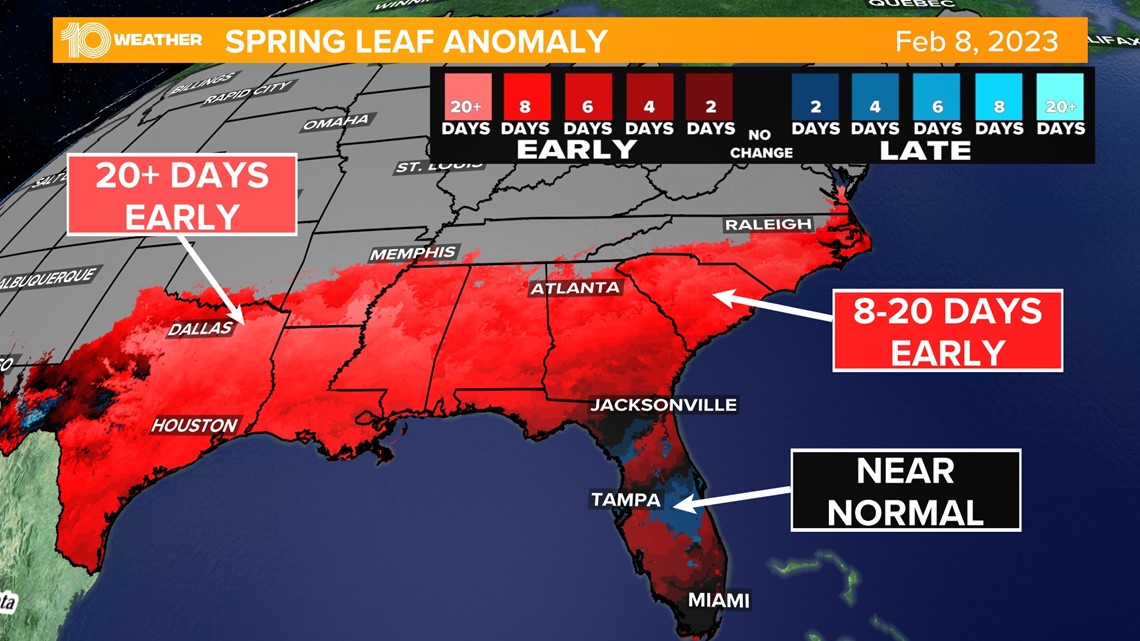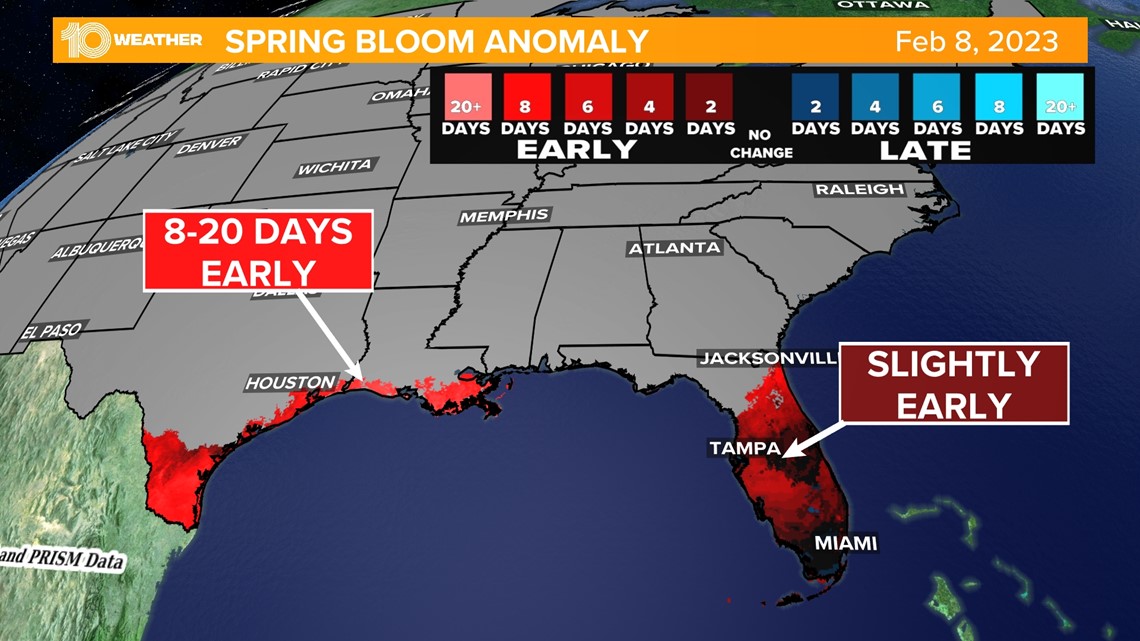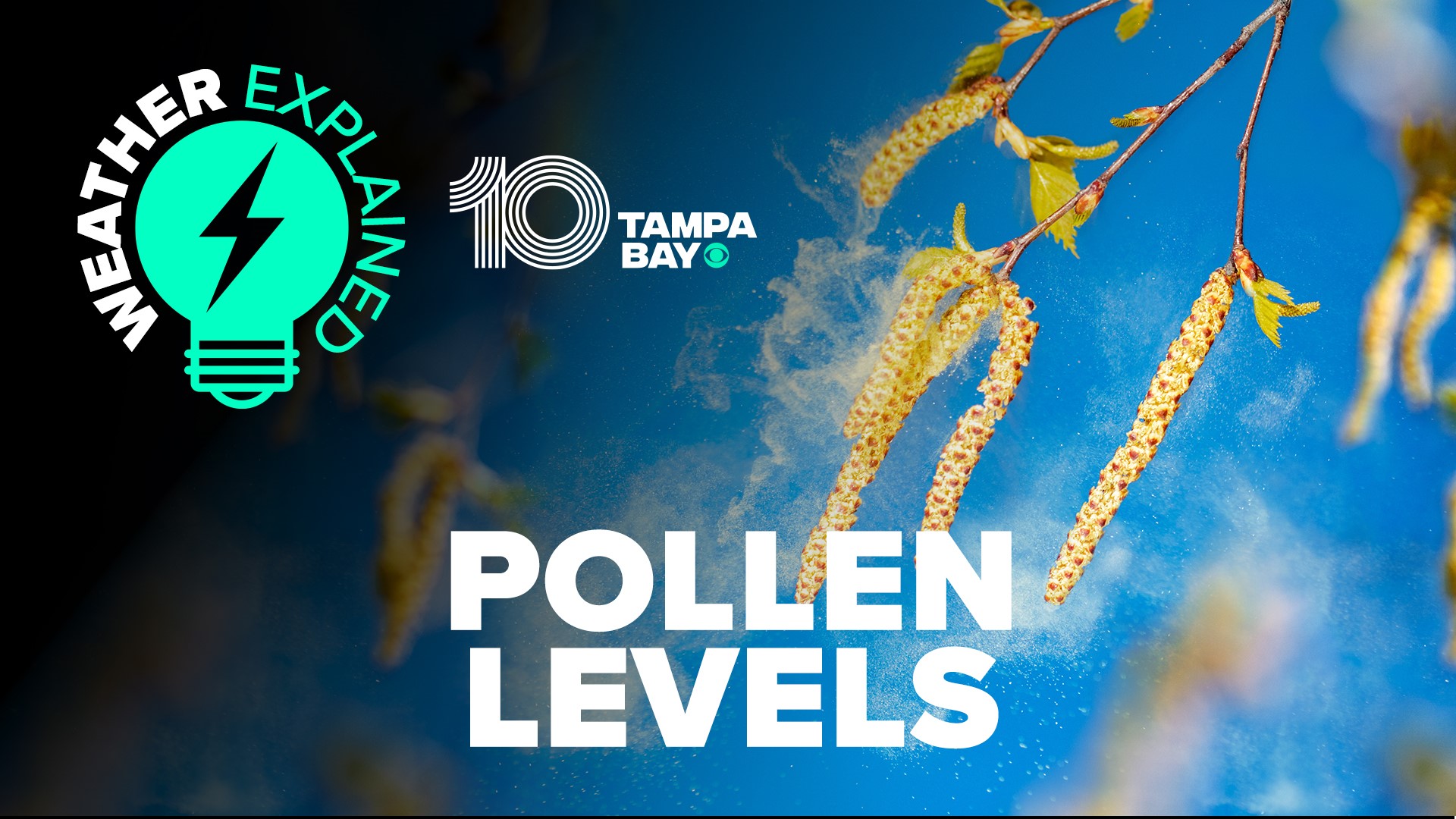ST. PETERSBURG, Fla. — Valentine's Day is less than a week away, but forget about "love is in the air" — because pollen is in the air.
Florida typically sees its spring bloom in February as the grasses start to grow again and trees begin to blossom. Medium-high to high allergy levels are forecasted across the Tampa Bay area through this weekend.
And the top allergens are all trees, with Juniper, Maple and Oak leading the way.
The USA National Phenology Network keeps track of how each spring compares to normal. They do this by using two index values. The Spring Leaf Index is measured by tracking the first plants to show their leaves, like lilacs and honeysuckles.
The second index comes a bit later than the Spring Leaf Index. The Spring Bloom Index tracks when the flowering of the early season plants occurs and when deciduous trees start to bloom.


Everywhere in red is where the spring arrived early and blue is where spring arrived late.
West-central Florida experienced its Spring Leaf in mid to late January, which is near normal for our area. The Spring Bloom is occurring right now around Tampa Bay, which is also near normal. That's why you might be noticing a layer of pollen on top of your cars or outdoor chairs.


Any friends or family off to the north are probably greening up a bit sooner than normal. While the Tampa area has been near normal for spring growth, most of the southern U.S. is running much earlier than normal.
According to the USA National Phenology Network, Charlotte, North Carolina, and Norfolk, Virginia, are about 11 days early. Seattle is also starting to see its spring leaf out about a week early.
Parts of Texas, including the Dallas, Houston and San Antonio areas, are seeing such an early spring that it only occurs this early about once every 40 years.


Where is spring coming later than normal? The Desert Southwest and Southern California. Both of those areas are more than a week late compared to normal.
Southern Arizona, including Phoenix and Tucson, is seeing such a late spring that it normally only happens this late once every 40 years.

